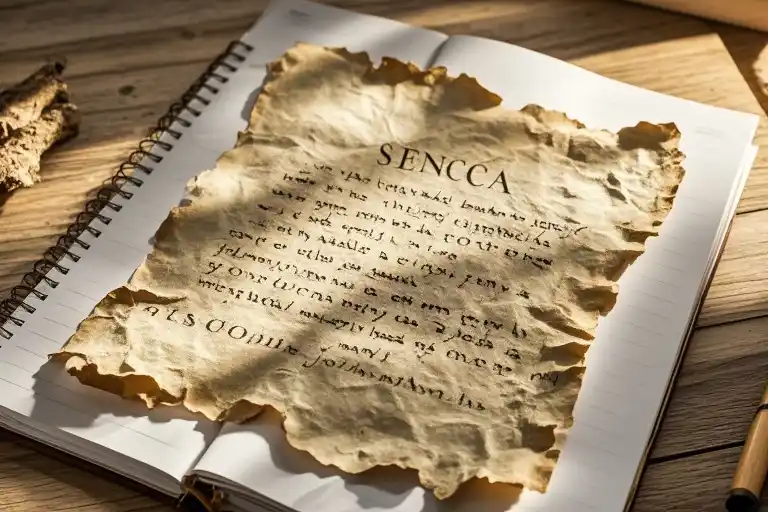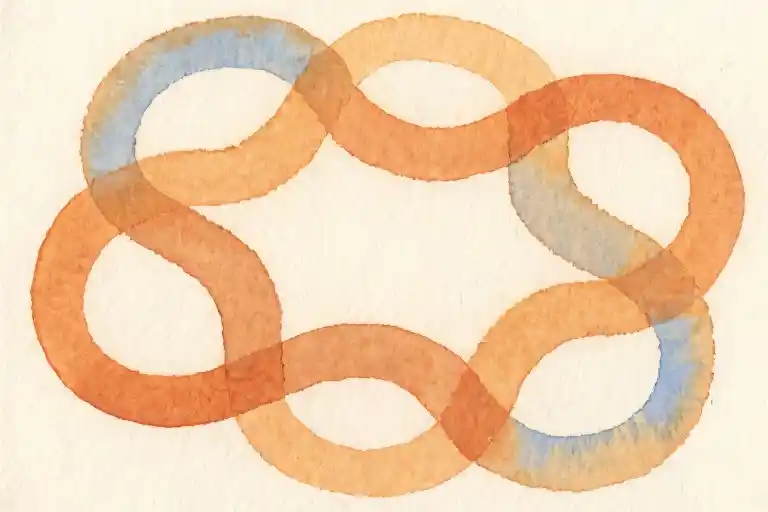The notification icon showed one unread message in my spam folder – an anomaly since I routinely purge that digital wasteland every Friday. The sender name made my fingers freeze mid-scroll: Shirley. We hadn’t spoken in years, not since my hurried departure from Rome. The subject line read simply: “That book we discussed?”
Gmail’s interface displayed the cruel chronology – sent April 12, 2016, received today. Seven years suspended in digital limbo. I knew before clicking that this wasn’t just another case of algorithmic misclassification. Shirley had been dead for six years and eleven months.
The realization arrived in layers, like peering through old apartment windows. First came the technical explanation – some server migration must have dislodged this frozen fragment of the past. Then the visceral punch: Shirley had tapped out these words while brushing crumbs from our last coffee meeting, unaware the pancreatic cancer diagnosis waiting three weeks later. Finally, the delayed guilt – not just for missing the funeral, but for this new, digital dimension of absence.
Modern grief wears strange costumes. That favorite shirt still wedged behind the dryer from when she helped me move apartments. A single turquoise earring lodged beneath my couch cushions, its mate lost during one of our wine-soaked book club nights. Now this email, blinking innocently in my dark bedroom, carrying questions that outlived their asker.
The message itself was painfully ordinary – could she borrow my copy of Elena Ferrante’s Neapolitan novels? We’d debated the translation over cornetto at that café near Piazza Navona. The mundane nature of the request made its survival more devastating. Death announcements expect solemnity; grocery lists and borrowed books aren’t supposed to become relics.
The Folded Time
It was one of those ordinary Tuesday afternoons when I decided to clean out my email archive. The digital equivalent of spring cleaning, scrolling past newsletters and expired coupons when the subject line caught me mid-swipe: “Can I borrow that book?” Sent from Shirley’s old AOL address. The timestamp read March 14, 2016 – seven years to the week.
We had been sitting at Café Greco the day before that email was sent, the kind of Roman afternoon where sunlight slants through espresso steam. Shirley stirred three sugars into her cappuccino as we debated whether Elena Ferrante’s Neapolitan novels lived up to the hype. Her copy had coffee rings on the cover, the kind of reader who treated books as living things rather than collectibles.
The email itself was pure Shirley – direct yet playful. “If you’ve finished My Brilliant Friend,” she wrote, “I’ll trade you for that Graham Greene biography you were raving about.” Typical of our years-long book exchange ritual that began when we met at the Vatican library, two expats bonding over English-language paperbacks in the theology section.
What the timestamp didn’t show was that Shirley would be dead within thirty days. A cerebral hemorrhage, I learned weeks later through a mutual friend’s forwarded message. The funeral had already happened at Sant’Eugenio, that beautiful Bernini-influenced church near Villa Pamphili where we’d once attended Easter Mass together.
By then I was in a Chicago apartment unpacking kitchenware, the news arriving via pixelated JPEGs of flower arrangements. Grief in the digital age means mourning through secondhand screenshots – a far cry from the tactile rituals we’d witnessed in Rome, where mourners still kiss marble tombstones and leave handwritten notes weighted with stones.
There’s a particular loneliness to transnational loss. When the condolence emails stop but your grief remains, when Google Maps still suggests the route to their apartment years later. The body keeps score in unexpected ways – I developed a sudden aversion to the scent of espresso that lasted months, though I never consciously connected it to our last conversation.
Seven years later, holding that unread email felt like discovering a sealed room in a familiar house. Time had folded back on itself, placing 2016 Shirley in my 2023 inbox with all the immediacy of a new message notification. The digital afterlife grants no closure, only endless present tenses where the dead still ask to borrow books.
The Archaeology of Absence
The blue cotton shirt still carried traces of her perfume when I pulled it from behind the dryer – that distinctive blend of bergamot and vanilla Shirley always wore. For seven years it had lain there, surviving countless laundry cycles, the fabric thinning but the scent remarkably persistent. Our noses remember what our minds try to forget. Holding the shirt felt like handling a museum artifact, something that had no business surviving its owner.
Objects become strange things when their users disappear. The gold hoop earring I found wedged between couch cushions still carried the slight bend from when it last brushed against Shirley’s neck. Its twin probably got buried with her in that Roman cemetery near St. Paul’s Basilica. This lone survivor had developed a patina from years of exposure to dust and sunlight filtering through my New York apartment windows. Jewelry outlives its wearer but loses its purpose, becoming mere metal shaped by absence.
Then there was the Christmas card. The red envelope had faded to pink where sunlight struck my desk drawer. Postmarked December 10, 2016 – three weeks after her funeral. Italian stamps featuring Botticelli’s Venus, the kind Shirley loved collecting. My thumb hesitated at the unbroken seal. Some thresholds feel too final to cross. This rectangle of paper contained the last words she ever wrote me, preserved in perpetual almost-arrival.
These artifacts formed an accidental museum of our friendship. Unlike deliberate memorials, they carried the quiet authority of things that survived by accident rather than design. The shirt smelled of ordinary Tuesdays, the earring recalled movie nights, the card held holiday plans that would never unfold. Grief lives in these mundane objects more vividly than in formal rituals – in the way a particular coffee mug collects dust, in the unerased contact entry, in the books still bearing her marginal notes.
Digital remnants complicate this archaeology. The email in my junk folder had no physical form to decay, no fabric to thin or metal to tarnish. It remained as crisp as the afternoon Shirley typed it, preserving not just her words but the expectation of reply. Electronic communications freeze relationships at precise moments, like insects in amber. We can observe but never alter them. That unread status glowed with terrible possibility – a conversation that could technically still begin, though one participant had long since left.
Between the Tiber and the Hudson
The scent of lilies still lingers in my memory, though I never entered the church where they surrounded Shirley’s casket. Roman funeral flowers have a particular density to them – waxy white petals pressing against polished wood, their perfume thick enough to taste. From the photos her sister later emailed me, I could reconstruct the scene: the way candlelight would have flickered across the gold embroidery of the priest’s vestments, how the Latin requiem mass would have echoed against centuries-old stone walls. In Rome, even grief moves through layers of history.
That night in my Brooklyn apartment, seven years delayed in my mourning, I projected the funeral photos onto my television screen. The digital glow felt sacrilegious compared to the beeswax candles that surely burned in Santa Maria sopra Minerva. My takeout container of pad thai sat untouched as I tried to synchronize my breathing with the imagined rhythm of the Dies irae. The dissonance was physical – my body insisting it was just another Thursday night, while some deeper part of me stood bareheaded under the Mediterranean sun.
Expat grief exists in perpetual time lag. When Shirley’s Roman friends gathered for monthly memorial dinners, I was eating breakfast. By the time I processed that she’d been gone six months, her local book club had already donated her shelf space to new members. The Vatican mailroom stopped holding her parcels months before I stopped seeing novels she’d recommend. Mourning at transatlantic distance means living in two temporalities – the immediate present of your current geography, and the suspended animation of the life you left behind.
What startled me most wasn’t the cultural differences in mourning rituals, but how isolation reshapes grief itself. In Rome, death remains a communal event – neighbors bring struffoli to the bereaved, children place handwritten notes in the coffin, the entire block attends the funeral lunch. In my Manhattan-adjacent building, I could have sobbed for weeks without anyone ringing my doorbell. American grief often gets relegated to designated hours in therapist offices or the anonymous comfort of online support groups. We’ve perfected the art of private sorrow.
The photos showed Shirley’s nephew placing a single book in her casket – our last shared read that I’d forgotten to return. Seeing that tattered paperback disappear into the earth triggered a different kind of guilt than the unopened email. At least the book completed its journey. Somewhere between the Tiber’s holy waters and the Hudson’s tidal flows, our stories had slipped out of phase, leaving conversations dangling mid-sentence across continents and years.
The Digital Reliquary
The book arrived on a Tuesday, its matte black cover absorbing the afternoon light. Cardinal Scola’s Waiting for a New Beginning felt heavier than its 200 pages should warrant, as if the weight of its subject matter had seeped into the paper stock. My thumb caught on the preface—written by my former supervisor—where a phrase pulsed like a faint heartbeat: Memory folds time like origami paper, creating hidden layers where past and present coexist.
Seven years. That’s how long Shirley’s email had lain dormant in my junk folder, a digital equivalent of the sweater left behind a dryer or the earring wedged beneath couch cushions. But unlike those tangible relics, this electronic artifact carried an eerie precision—the timestamp reading 3:14 PM, March 8, 2016, preserved with the clinical accuracy only servers can provide. The Vatican’s email system had flagged it as suspicious, perhaps detecting some anomaly in Shirley’s habitual writing patterns that none of us human friends had noticed.
Cardinal Scola’s text circled this paradox of preservation. His description of elderly parishioners keeping Mass cards in their breviaries mirrored my own compulsion to archive rather than delete. There’s sacramental weight to how digital platforms embalm our interactions—the unread notification badges becoming modern-day memento mori, the cloud storage substituting for reliquaries that once held saints’ bones. I traced the embossed cross on the book’s cover, its ridges echoing the tactile memory of typing replies to Shirley that never sent.
Technology reshapes mourning in peculiar ways. Physical objects degrade predictably—perfume evaporates from scarves, paper yellows at the edges. But digital remnants exist in perpetual present tense, their pixels never fading, their timestamps eternally fresh. That unread email still carried the urgency of something sent yesterday, its “RE: Tuesday’s book club” subject line brutally mundane for what had become a posthumous message. The Church teaches that saints exist outside time; our inboxes now grant similar immortality to ordinary correspondence.
When I finally clicked “mark as read,” the interface offered no ritual. No virtual candle to light, no option to move it to some sacred folder between “Archive” and “Trash.” Just the hollow satisfaction of watching the bold font turn regular, as if performing some administrative exorcism. The cardinal’s words on “grace moving through temporal folds” took on new meaning—perhaps some messages must wait years to be received, not because of technological failure, but because we need time to grow into their meaning.
Near the book’s end, a passage about resurrection narratives made me pause. The author described how first-century Christians would sometimes re-bury bones in ossuaries after the flesh had decayed, a practice both practical and theological. It struck me that our digital remains demand the opposite treatment—we must periodically disinter them before they fossilize beneath layers of new data. To leave an email unread for seven years isn’t neglect; it’s accidental mummification.
Now when I encounter Shirley’s name in old threads, I let it linger on screen like the scent of wax after a votive candle burns out. The Church calls this communio sanctorum—the communion of saints. Maybe our inboxes hold their own version: a communion of ghosts, where the living and the dead still exchange messages across folded time.
The Weight of Marking ‘Read’
The cursor hovers over the archive button, trembling between digital preservation and symbolic closure. To mark Shirley’s email as ‘read’ now feels less like an administrative task and more like an archaeological ritual – brushing dust off a clay tablet while knowing the civilization that inscribed it has crumbled. That little blue dot next to her message contains multitudes: seven years of technological updates, three different email interfaces, two continents, one irreversible absence.
What surprises me isn’t the coincidence of Cardinal Scola’s book publication date aligning with Shirley’s death anniversary – grief makes chronologists of us all, forever noticing phantom patterns in calendars. What lingers is the realization that digital relics demand participation unlike physical ones. The shirt behind the dryer stays forgotten until stumbled upon; the email actively resurfaced itself through some algorithmic quirk, insisting on being acknowledged.
Modern mourning presents us with this peculiar paradox: we’ve gained infinite storage for the departed’s digital traces while losing cultural scripts for handling them. Italian funeral traditions provided clear stages – the velatio ceremony covering mirrors, the nine days of novena prayers. But my Gmail offers no liturgy for when to delete, when to archive, when to let an unread message remain perpetually new. The ‘active forgetting’ tools we do possess – unsubscribe, block, report spam – feel violently inappropriate for these electronic mementos.
Perhaps this is why the cardinal’s phrase ‘waiting for a new beginning’ resonates differently in our inbox age. Not as passive anticipation, but as conscious curation of what we allow to remain unfinished. That Christmas card in the drawer never demanded to be opened; Shirley’s email requires either engagement or dismissal. By marking it read but keeping it, I’ve created a third option – transforming digital ephemera into something resembling those medieval palimpsests where old texts shimmer faintly beneath new ones.
In the end, the most truthful memorial might be this imperfect middle ground between preservation and release. Not deleting, but no longer treating the message as something that could be answered. Not framing the email as sacred artifact, but honoring its existence as proof that some conversations outlast their speakers. The real grace lies not in the technology’s ability to freeze time, but in our human capacity to hold multiple truths: that Shirley is gone, that her words remain, and that both realities can coexist without resolution.





